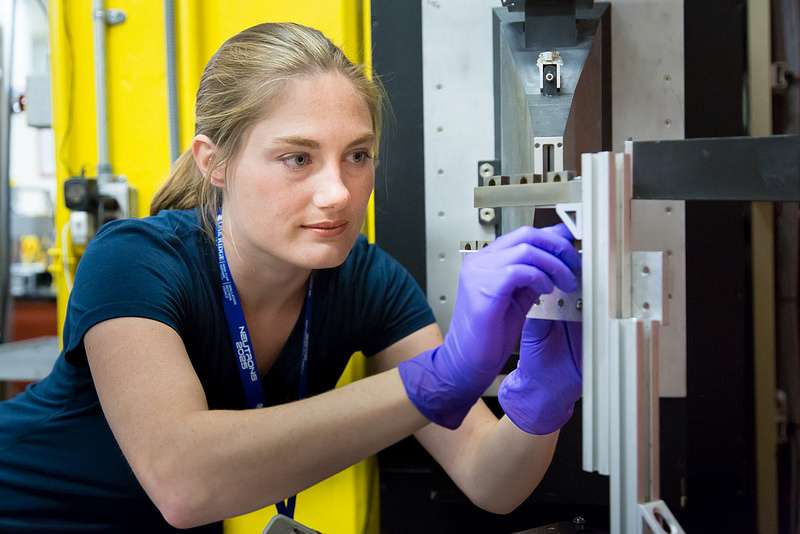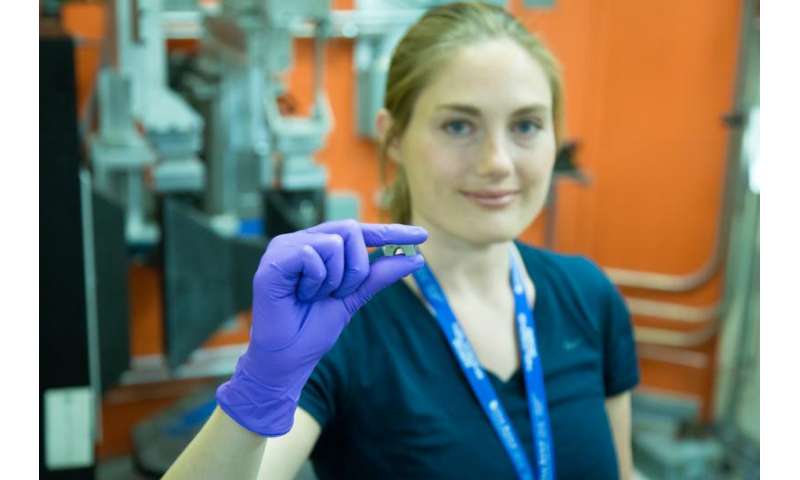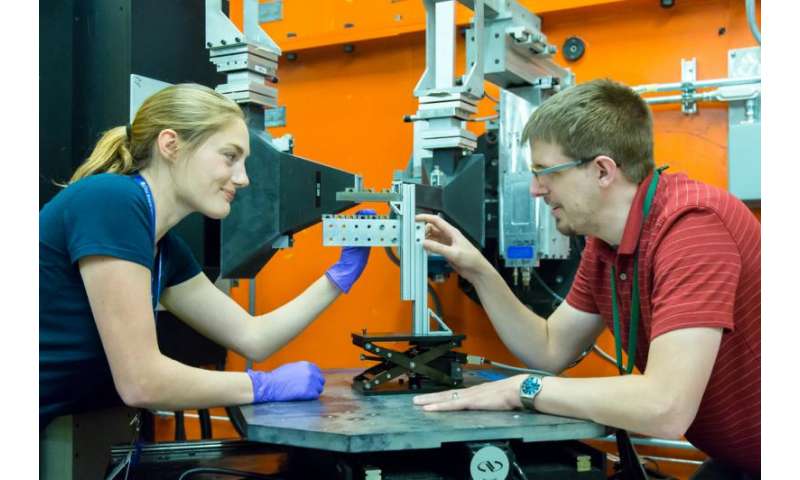Unlocking potential of 3-D printed rocket parts with neutrons

The process of 3D printing, or additive manufacturing, holds promise for advancements in almost every industry, including even rocket science. Engineers from NASA's Marshall Space Flight Center in Huntsville, Alabama, used neutrons recently to help understand the potential benefit of additive manufactured rocket engine components.
The team used the Neutron Residual Stress Mapping Facility at Oak Ridge National Laboratory's (ORNL) High Flux Isotope Reactor (HFIR), beam line HB-2B, to study residual stress in additive manufactured materials with hopes of qualifying them for flight, which could significantly reduce cost and schedule of flight hardware component manufacture.
"Using the additive manufactured version of one engine component we are studying could reduce the amount of time needed to build a space-flight ready engine by years," said Stacey Bagg of NASA Marshall.
Such a significant time reduction means major cost savings for the project. But before a component can be used for space flight, the team needs to be sure it's safe.
"Of particular concern are the residual stresses in the resulting additive manufactured components, as residual stresses may affect material properties and resultant part geometries and are difficult to measure on the resulting complex shapes," said Bagg. "The HFIR neutron residual stress facility provides the unique capability to take detailed internal residual stress measurements on these shapes."
This research also provides fundamental data providing insight into how residual stresses develop around common features of rocket propulsion components during the additive manufacturing process. The team's research will be made publicly available and may be used to improve processes and controls for powder-bed additive manufacturing such that components exhibit improved mechanical and geometric properties.
-

Stacey Bagg, research engineer from NASA’s Marshall Space Flight Center, is using HFIR beam line HB-2B, to study residual stress in additive manufactured rocket engine components to qualify them for space flight. Credit: Genevieve Martin/ORNL -

Stacey Bagg, research engineer from NASA’s Marshall Space Flight Center, is using HFIR beam line HB-2B, to study residual stress in additive manufactured rocket engine components to qualify them for space flight. Jeff Bunn, right, ORNL postdoctoral research associate and HB-2B instrument team member, assists Bagg with preparing the experiment. Credit: Genevieve Martin/ORNL
Provided by US Department of Energy



















